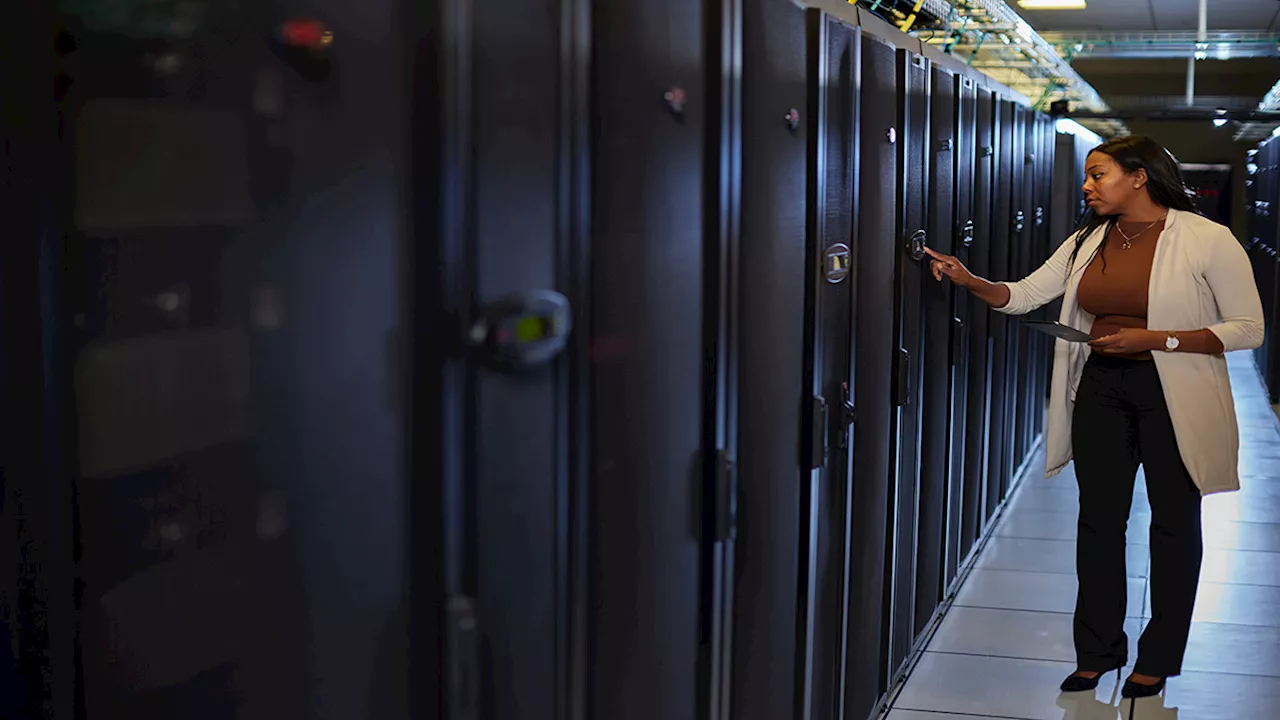Technology
Data Centers Tackle Energy Resiliency Amid Soaring AI Demand

The rapid growth of artificial intelligence (AI) is placing unprecedented demands on the energy infrastructure that supports data centers. According to Schneider Electric, a leader in energy management solutions, data centers are projected to consume approximately 12% of total U.S. electricity by 2028, up from around 4.4% today. This surge is particularly evident in high-density regions like Northern Virginia, Silicon Valley, and Dallas–Fort Worth, where local power grids are increasingly strained.
Data centers not only facilitate AI training but also enable AI inference processes, which power applications such as chatbots and recommendation algorithms. As these facilities cluster in specific locations, they exacerbate the pressure on already taxed local energy systems. Dominion Energy has indicated that billions of dollars in infrastructure investment will be necessary to accommodate this growth and ensure energy efficiency.
The electrification of AI-ready data centers presents a dual challenge. While the U.S. power grid supports AI innovation, it struggles to keep pace with the rapid rise in demand. Without strategic investments, the risk of localized energy crises in high-demand areas increases. Solutions at the utility level are emerging, including digital substations that can enhance grid capacity by 10% to 30% through advanced monitoring.
Innovative Approaches to Energy Management
To mitigate the strain on the grid, data centers are adopting advanced energy management technologies. Tools such as AI-driven analytics and modern energy management systems can significantly improve efficiency and generate cost savings. By investing in interregional transmission and integrating renewable energy sources, data centers can alleviate grid pressure while promoting sustainable AI growth.
Emerging technologies, including microgrids and onsite distributed energy resources (DERs), are crucial in this transition. They not only enhance energy efficiency but also stabilize electricity demand, allowing for AI expansion without overwhelming the grid. However, constraints such as long permitting delays and underinvestment in DERs hinder the scalability of data centers.
As AI continues to grow exponentially, insufficient energy planning could lead to a scenario where demand exceeds supply. The resulting strain on infrastructure may force increased reliance on fossil fuels and inefficient computing systems, with significant environmental repercussions. This situation could culminate in localized blackouts and economic disruptions, prompting a public backlash against AI-driven energy consumption.
Collaboration and Future Solutions
Addressing these energy challenges requires collaboration between industry leaders and policymakers. Proven solutions, such as real-time monitoring and control systems, provide visibility into energy consumption patterns and enable dynamic adjustments based on grid conditions. These systems ideally do not depend on proprietary components, ensuring flexibility and integration.
Data centers can also optimize their onsite power systems to better manage energy costs while enhancing reliability. Liquid cooling technology has become the industry standard, offering up to 3,000 times more efficiency than traditional air cooling methods, allowing more energy to be directed toward computing rather than cooling.
Participation in demand response programs offers another avenue for data centers to become active partners in grid stability. Currently, these programs often do not accommodate the operational needs of data centers, which require more time to adjust power usage. By adapting program parameters and integrating cybersecurity measures, utilities could encourage greater participation from these significant power consumers.
The energy challenges posed by AI-ready data centers are substantial but not insurmountable. By prioritizing efficiency, embracing innovative technologies, and fostering collaboration, the U.S. can manage the electricity demand of AI while supporting sustainable growth. Critical hurdles remain, including incompatible demand response regulations and the slow pace of renewable energy deployment.
Addressing these issues requires coordinated efforts across sectors to ensure that the data center industry evolves from being merely a consumer of energy to a partner in grid stability. With the right investments and policies, the potential for sustainable AI can be realized, paving the way for a new era of digital transformation that aligns with environmental and economic goals.
-

 Technology4 months ago
Technology4 months agoDiscover the Top 10 Calorie Counting Apps of 2025
-

 Health2 months ago
Health2 months agoBella Hadid Shares Health Update After Treatment for Lyme Disease
-

 Health3 months ago
Health3 months agoErin Bates Shares Recovery Update Following Sepsis Complications
-

 Technology3 weeks ago
Technology3 weeks agoDiscover 2025’s Top GPUs for Exceptional 4K Gaming Performance
-

 Technology4 months ago
Technology4 months agoDiscover How to Reverse Image Search Using ChatGPT Effortlessly
-

 Technology2 months ago
Technology2 months agoElectric Moto Influencer Surronster Arrested in Tijuana
-

 Technology4 months ago
Technology4 months agoMeta Initiates $60B AI Data Center Expansion, Starting in Ohio
-

 Technology4 months ago
Technology4 months agoRecovering a Suspended TikTok Account: A Step-by-Step Guide
-

 Health4 months ago
Health4 months agoTested: Rab Firewall Mountain Jacket Survives Harsh Conditions
-

 Lifestyle4 months ago
Lifestyle4 months agoBelton Family Reunites After Daughter Survives Hill Country Floods
-

 Technology3 months ago
Technology3 months agoUncovering the Top Five Most Challenging Motorcycles to Ride
-

 Technology4 weeks ago
Technology4 weeks agoDiscover the Best Wireless Earbuds for Every Lifestyle



















